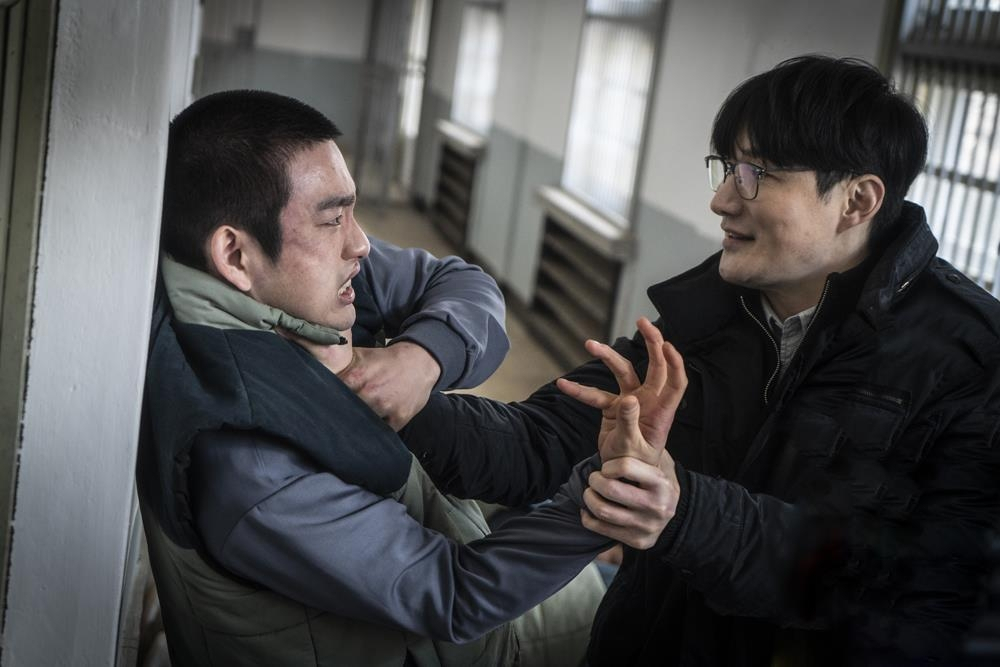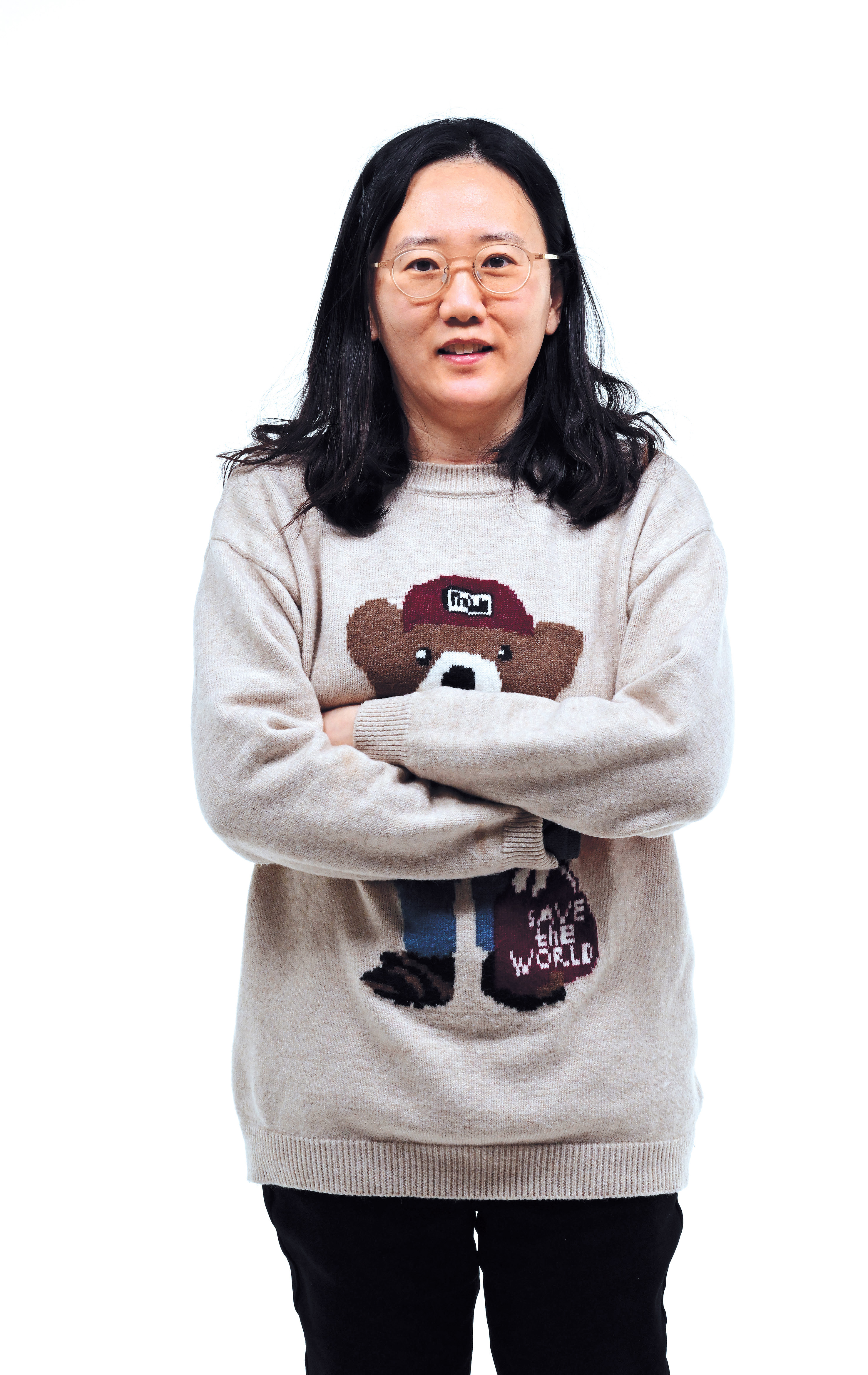Korean cinema sees more blood, guts and gore
Online video streaming, foreign shows raised bar for graphic content while parents call for more rigorous rating
By Kim So-hyunPublished : Dec. 14, 2022 - 14:21

Crime action film “The Roundup” was the biggest box office hit of 2022 in South Korea, selling over 10 million tickets in just 25 days after its release in May.
Starring Ma Dong-seok, the sequel to 2017 film “The Outlaws” was rated 15, which means it was deemed suitable for audiences aged 15 and older. Children under 15 are allowed to watch these movies in theaters as long as they are accompanied by a parent or guardian.
A few minutes into the film, however, the main villain, played by Son Suk-ku, savagely cuts off an abductee’s ear, and stabs him to death.
The 106-minute film is interspersed with graphic scenes of violence and blood splatter. Son appears -- in what feels like almost all of his scenes -- wielding a huge rectangular blade that resembles a Chinese chef’s knife, and striking people with it.
Despite its otherwise entertaining plot built around a simple but suspenseful story of a Korean cop catching murderers in Vietnam, the movie is not for adults who are not immune to human butchery on screen, not to mention children or teenagers.
More recent films “Christmas Carol” and “Project Wolf Hunting,” rated 18, which no one under the age of 18 is allowed to watch, have been heavily criticized for having profuse portrayals of violence that have caused some to leave in the middle of a preview.

How are they rated?
According to the Korea Media Rating Board’s rating guidelines on violence, a movie is given a 15 rating if the violence is “not constant or detailed.”
Films in which “physical violence, torture and killing using body parts or tools are not constant or detailed;” where “bodily harm and bloodshed are not continuously or directly expressed;” and where “sexual violence is indirectly expressed in context” are rated 15, under the board’s criteria.
“Violence in historical incidents, comic or unrealistic situations are considered in context,” it says.
As for “The Roundup,” the film subcommittee of the rating body said although the “indirect scene” of cutting an arm off a corpse and scenes of killing and wounding using weapons were “rather violently portrayed,” they are “not detailed,” and the level of violence and the sensation of fear are “somewhat high.”
The board said the movie is rated 15 because, as it deals with crimes such as kidnapping and murder, disposal of dead bodies and contract killing, “the risk of imitation is also somewhat high.”
Ambiguity of words like “somewhat” aside, because there are so many films containing constant, detailed or directly expressed violence with high risk of copycat crimes that deserve an 18 rating, the less severe ones appear to be rated on a curve.
“Entering this age of online video streaming, Korean film producers and viewers, especially those in their 20s and 30s, have become rather insensitive to the level of violence,” said cultural critic Kim Hern-sik.
“While the online video streaming world is relatively less regulated, we do need to be more stringent in the theater space which teenagers can use. It was wrong to rate ‘The Roundup’ 15, especially at a time when families were returning to the theaters after more than two years of the pandemic.”
The fact that the nine-person film subcommittee rates hundreds of movies every month also brings up the question of how thoroughly they can watch each piece.
The subcommittee rated 286 movies, including animated films, in October. Less than half, or 121, were Korean products.
Why the rise in graphic content?
The use of violence is the easiest and simplest way to depict an eruption of conflict, according to Ha Jong-won, professor of media communication at Sun Moon University.
"It's also easier for actors to express anger or fear from the violence, than a complex myriad of inner feelings," he said.
"The habitual use of violence follows a typical formula of storytelling. Violence is used in the beginning to show conflict and get viewers' attention, and the conflict gets more serious as the story progresses and involves more people."
According to the critic Kim, there weren’t many visually brutal, violent content in Korean cinema in the past.
Whereas slasher films are an established subgenre in the West, Korea has never had such a thing, he said.
But as the internet broadened viewers’ access to various content around the world, and as Korean thrillers like “Parasite” and “Squid Game,” which contain violent and provocative scenes, were well-received abroad, many local producers appear to be going after similarly raw, unpleasant visuals for immediate arousal of emotions such as fear or anger.
The intensifying competition between those in the film industry and online streaming to appeal to viewers often triggers some producers to “customarily” resort to such images, Kim said.
The rise of disturbing visuals also has to do with many domestic viewers having seen foreign content with high levels of violence and nudity such as HBO shows, which raised the bar, according to Chung Deok-hyun, another cultural critic.
“As Koreans come across such high levels (of violence) on foreign shows, it’s gotten harder to get their attention visually,” he said.
“HBO shows, for instance, have highly provocative content. But many of the shows are good, which means the violent or sensual scenes generally pass as necessary in delivering the overall message of the show.”
“Project Wolf Hunting,” which displays constant human butchery among dangerous criminals and a monster on a cargo ship, on the other hand, was a box office disaster because most of it was unnecessary and “felt like two hours of torture,” according to Chung.
“As long as the gatekeeping through adequate rating is done properly, the viewers will make good judgement” on what is worth watching and what isn’t, he said.
Film critic Hwang Young-mee said Korea’s rating criteria, which was previously very strict about violence and sex, has become much more flexible on violence, and mentioned highly acclaimed Korean thrillers as a possible factor.
“Korean thrillers have received favorable reviews at overseas film festivals, and I felt that the scenes of violence in these films are also very well-made,” Hwang said.
“Compared to when there was a lot of gangster movies, now, movies containing violence touch on much more diverse themes. I think the rating committee has become more amenable in this respect.”
‘The horror’ of viewers
Contrary to film critics who value freedom of expression over most other things, and generally believe that poorly made movies containing violence are not worth discussing because viewers will turn away from them anyway, the general audience, especially parents, are worried more than ever about the gratuitous violence and profanity on screen.
“They do check student identification cards more stringently in theaters now, compared to before, but once you start watching movies rated 15 with your kids, you begin to wonder ‘why do they even bother to check the IDs’ and if this really is a 15-rated film,” said Choi Seung-won, who has two teenage children.
“Brutal violence including sexual violence, obscene language, lewd or psychopathic content are brazenly shown in 15-rated films, which is appalling. Kids don’t seem as appalled, perhaps because they’re already used to seeing all kinds of unregulated videos online, which makes me worry even more.”
A more rigorous rating is necessary as children nowadays see everything through videos rather than text, said Choi who no longer goes to the cinema with her children.
Jason Di, an American who teaches English at Sookmyung Women’s University, also feels that the level of graphic violence on screen has gone up in Korea as well as around the world, and is concerned that children are easily exposed to it.
“I was shocked to see so many very young children with their parents at the theater to watch ‘Black Panther: Wakanda Forever,’” he said.
The Marvel Studios movie was rated PG-13 -- which mean parents are advised caution and some material may be inappropriate for children under 13 – in the US.
As for some filmmakers apparently vying for “more realistic” or graphic show of violence, Di said “there might be pressure directors feel to push the envelope when it comes to violence, and it's an easy way to be seen as 'edgy' or to make a name for oneself.”
The problem with some movies is that the hero, despite being a law enforcement officer, is often as violent as the villain, and uses illegal means to achieve his goals in the name of justice, professor Ha said.
"Research has proved that movies and TV shows affect our perception of reality. Seeing the real world through these videos of rampant violence develops distrust of society and fear of others," he said, mentioning the "mean world syndrome," a hypothesized cognitive bias wherein people may perceive the world to be more dangerous than it actually is, due to long-term exposure to violent content on mass media.
Hong Sang-mi, a mother of two, said she feels “hopeless” about the proliferation of such content.
“Even if you explain to kids why certain content are harmful and try to keep them from watching, they get to watch anyways through YouTubers who show the most sensational or shocking clips of every movie or show (on their channels). It’s rather hopeless,” she said.
“The real problem I think is that the standards on right and wrong are falling apart. If people are drawn to something and if you can make money out of it, it becomes what people should chase after.”








![[KH Explains] Hyundai's full hybrid edge to pay off amid slow transition to pure EVs](http://res.heraldm.com/phpwas/restmb_idxmake.php?idx=644&simg=/content/image/2024/04/18/20240418050645_0.jpg&u=20240419100350)







![[From the Scene] Monks, Buddhists hail return of remains of Buddhas](http://res.heraldm.com/phpwas/restmb_idxmake.php?idx=652&simg=/content/image/2024/04/19/20240419050617_0.jpg&u=20240419175937)

![[KH Explains] Hyundai's full hybrid edge to pay off amid slow transition to pure EVs](http://res.heraldm.com/phpwas/restmb_idxmake.php?idx=652&simg=/content/image/2024/04/18/20240418050645_0.jpg&u=20240419100350)

![[Today’s K-pop] Illit drops debut single remix](http://res.heraldm.com/phpwas/restmb_idxmake.php?idx=642&simg=/content/image/2024/04/19/20240419050612_0.jpg&u=)